Nikon AF-S Nikkor 35mm f/1.8G Review
-
Ease
of Use -
Sample
Images -
Lens
Specs -
Rating &
Conclusion -
Main
Rivals -
Review
Roundup - Comment
-
More…

Introduction
The AF-S Nikkor 35mm f/1.8G is a new moderate wide-angle lens for Nikon's full-frame DSLRs. The AF-S Nikkor 35mm f/1.8G features 11 optical elements in 8 groups, including one aspherical lens element and one ED glass element, a Silent Wave Motor which provides smooth and quiet auto-focus with full-time manual focus override, and a minimum focus distance of 25cm. The Nikon AF-S Nikkor 35mm f/1.8G lens is available now priced at £519.99 / €635.00 / $599.95.
Ease of Use
Tipping the scales at exactly 305 grams, the AF-S Nikkor 35mm f/1.8G is a lot lighter and more compact than the faster AF-S Nikkor 35mm f/1.4G, which weighs in at 600 grams. Coupled to the Nikon D610, as seen in the photos below, the lens feels well-balanced.
 The AF-S Nikkor 35mm f/1.8G lens mounted on a Nikon D610
The AF-S Nikkor 35mm f/1.8G lens mounted on a Nikon D610
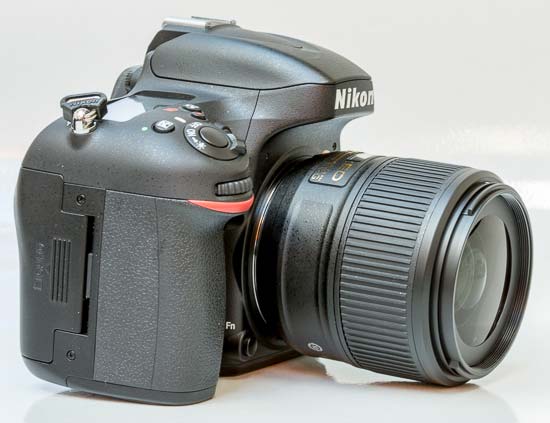 The AF-S Nikkor 35mm f/1.8G lens mounted on a Nikon D610
The AF-S Nikkor 35mm f/1.8G lens mounted on a Nikon D610
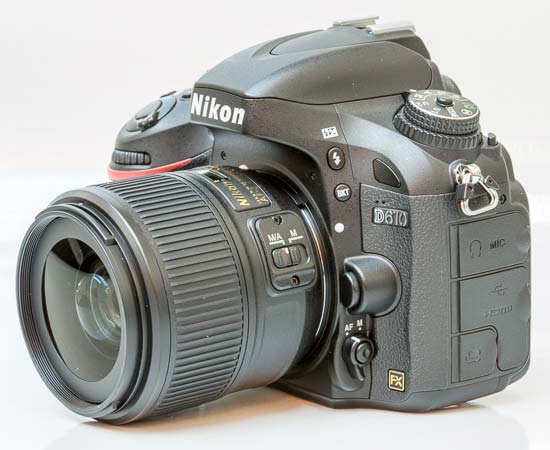 The AF-S Nikkor 35mm f/1.8G lens mounted on a Nikon D610
The AF-S Nikkor 35mm f/1.8G lens mounted on a Nikon D610
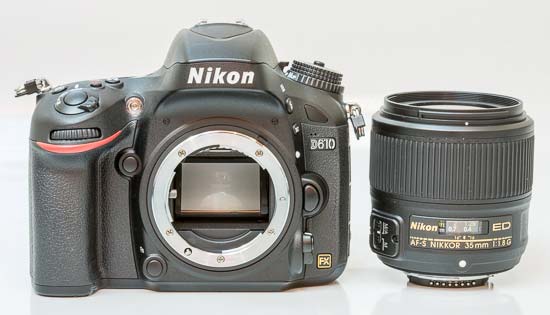 The AF-S Nikkor 35mm f/1.8G lens alongside the Nikon D610
The AF-S Nikkor 35mm f/1.8G lens alongside the Nikon D610
Despite its relatively modest price-tag, the build quality of the AF-S Nikkor 35mm f/1.8G is very good. The lens feels solid in your hand, even if the outer barrel and the 58mm filter thread appear to be plastic. The focusing ring is wide, ridged and rubberised. As this is a G series lens, it has no aperture ring - no big deal unless you wanted to use it on a very old film body.
The lens features a distance scale complete with a DOF scale, although the latter is of extremely limited use, having markings for f/16 only.
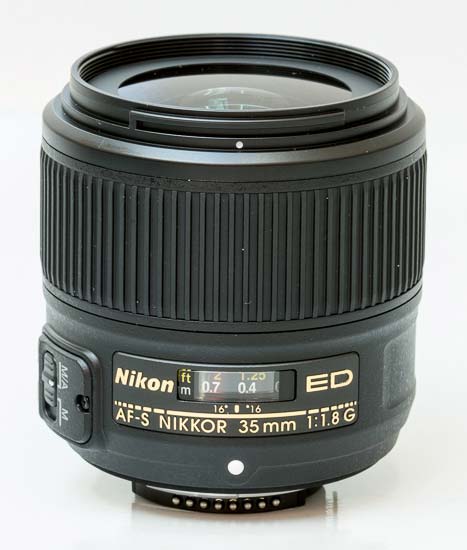 Front of the AF-S Nikkor 35mm f/1.8G lens
Front of the AF-S Nikkor 35mm f/1.8G lens
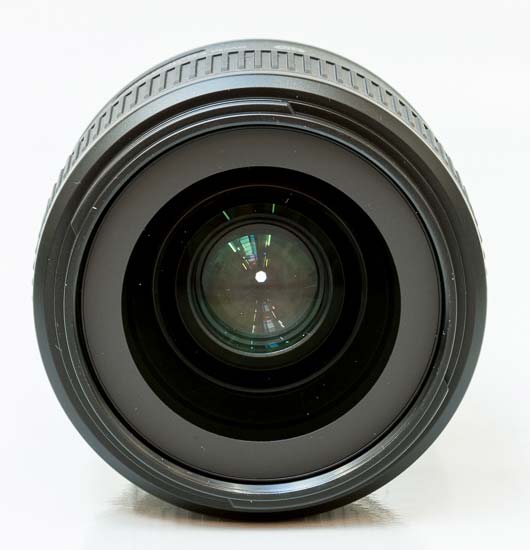 Front of the AF-S Nikkor 35mm f/1.8G lens
Front of the AF-S Nikkor 35mm f/1.8G lens
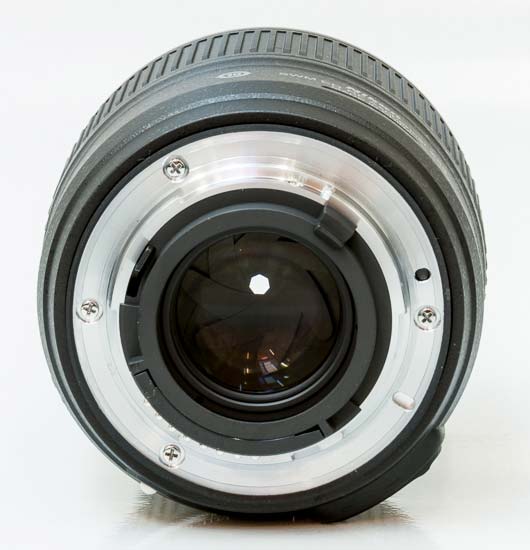 Rear of the AF-S Nikkor 35mm f/1.8G lens
Rear of the AF-S Nikkor 35mm f/1.8G lens
Since the AF-S Nikkor 35mm f/1.8G does not have Vibration Reduction or a focus limiter, the only control on the lens barrel is a focus mode switch with the usual M/A and M settings.
The Nikon AF-S 35mm f/1.8G is sealed against dust and moisture, so it's a great companion for similarly sealed bodies even when they are used in dusty locales or less-than-ideal weather conditions.
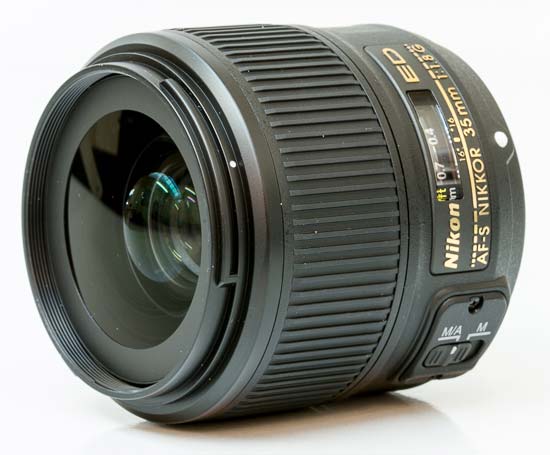 Side of the AF-S Nikkor 35mm f/1.8G lens
Side of the AF-S Nikkor 35mm f/1.8G lens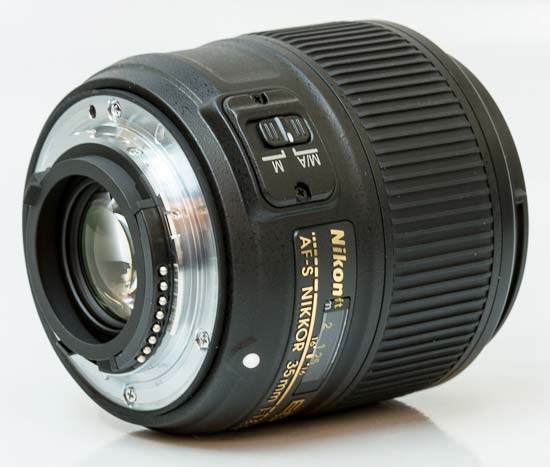 Side of the AF-S Nikkor 35mm f/1.8G lens
Side of the AF-S Nikkor 35mm f/1.8G lens
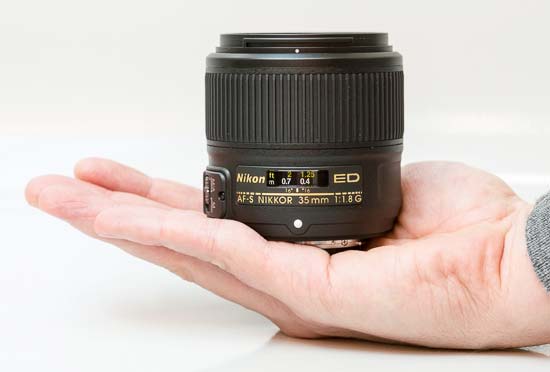 The AF-S Nikkor 35mm f/1.8G lens in-hand
The AF-S Nikkor 35mm f/1.8G lens in-hand
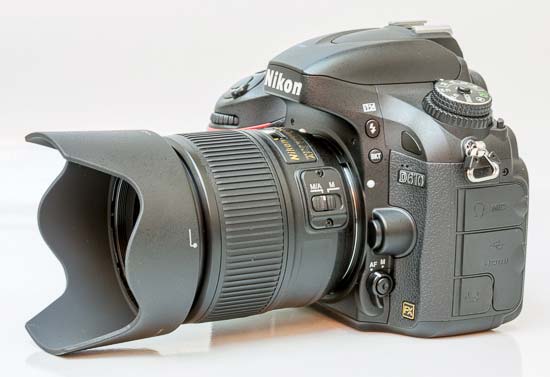 The AF-S Nikkor 35mm f/1.8G lens with the supplied HB-70 lens hood fitted
The AF-S Nikkor 35mm f/1.8G lens with the supplied HB-70 lens hood fitted
The AF-S Nikkor 35mm f/1.8G lens ships with the dedicated, petal-shaped, plastic HB-70 hood and a soft lens bag.
Auto-focus
The Nikon AF-S 35mm f1.8 lens features a Silent Wave Motor (SWM) that allows near-silent auto-focusing on all Nikon DSLR cameras. Importantly, this solution allows instant manual override even when the focus mode switch is in the M/A position. Focusing is fully internal, meaning the length of the lens always remains constant, and the front of the lens does not rotate on focus. This is good news for those who use polarisers or ND grads on a regular basis. In use, we found the focusing to be very quiet and pleasingly fast - but not instantaneous - with the lens mounted to a Nikon D610 body.
Chromatic Aberrations
Both lateral chromatic aberrations, typically seen as blue or purple fringes along contrasty edges, and Longitudinal chromatic aberrations, which is green fringing evident in blurred backgrounds and magenta fringes sometimes appearing in out-of-focus foregrounds, are both evident with this lens - the examples below show the worst-case scenarios.
 |
 |
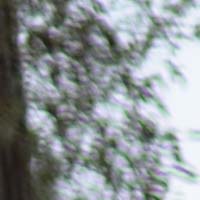 |
 |
Light Fall-off
With the lens wide open, you can see some heavy light fall-off in the corners and along the frame edges. Stopping down helps, although to completely get rid of this phenomenon, you will need to use an f-stop of f/5.6 or smaller.

Macro
The Nikon 35mm f1.8 is not a macro lens. The closest focusing distance is 25cm, and Nikon quotes a maximum magnification of 0.24x for the lens. The following example illustrates how close you can get to the subject, in this case a CompactFlash card.
 Close-up performance
Close-up performance
Bokeh
Bokeh is a word used for the out-of-focus areas of a photograph, and is usually described in qualitative terms, such as smooth / creamy / harsh etc. One of the reason to buy a fast lens is to be able to isolate the subject from the background, which is normally very hard to do with a wide-angle lens. Nikon was apparently very much aware of this requirement, as they employed an iris diaphragm with 7 rounded blades for a pleasing rendering of the out-of-focus highlights. Based on what we have seen, we can say that they largely succeeded. Below you'll find some examples, but you are also encouraged to check out our sample images.
 |
 |
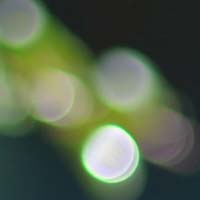 |
 |
Sharpness
In order to show you how sharp this lens is, we are providing 100% crops on the following page.
-
Ease
of Use -
Sample
Images -
Lens
Specs -
Rating &
Conclusion -
Main
Rivals -
Review
Roundup - Comment
